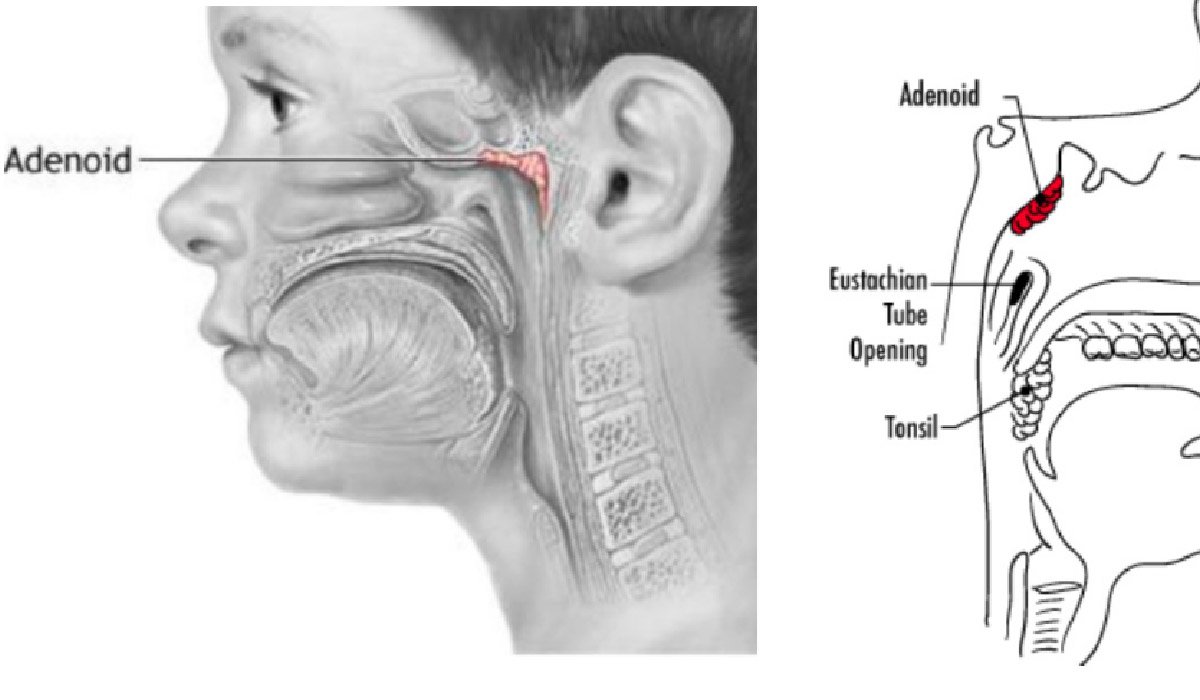Blog
Adenoidid: Shocking Facts, Causes, and Effective Treatments Parents Must Know

Introduction
Adenoidid might not be a term you come across every day, yet it carries a great deal of importance when it comes to understanding children’s health and overall respiratory function. The adenoids are small patches of lymphatic tissue located at the back of the nasal cavity, and their role is critical during the early years of life when the immune system is still developing. When these adenoids become inflamed or enlarged, the condition is referred to as adenoidid, and it can cause a cascade of health issues ranging from difficulty in breathing to frequent ear infections.
Parents and caregivers, in particular, need to be aware of adenoidid because it not only impacts daily comfort but also influences sleep, speech, and even long-term facial development if left untreated. This article will explore in detail what adenoids are, what adenoidid means, its causes, symptoms, complications, diagnostic methods, and treatment options, along with prevention and long-term outlooks so you can be fully informed on this often-overlooked but very significant health topic.
What Are Adenoids?
Adenoids are part of the body’s lymphatic system, which is the network responsible for defending us against harmful germs and infections. These small glands are located high in the throat behind the nose, in an area known as the nasopharynx. Unlike tonsils, which are visible at the back of the throat, adenoids are hidden and require special medical tools to be examined. Their primary function is to trap bacteria and viruses that enter through the nose, acting as the body’s early warning system.
They also play a role in producing antibodies, the proteins that help fight infections. While tonsils and adenoids both protect the body, adenoids are more important during early childhood because this is the stage when a child’s immune system is still building resilience. As children grow older, adenoids naturally shrink in size and gradually become less significant to immune defense, yet problems can still arise when they swell excessively or become infected, leading to adenoidid.
What is Adenoidid?
The term adenoidid is used to describe the inflammation or enlargement of the adenoids, often caused by infections, allergies, or environmental irritants. Medically, this condition is significant because it interferes with normal breathing and immune function. Adenoidid is comparable to tonsillitis, but while tonsillitis affects the tonsils in the throat, adenoidid specifically targets the adenoids located in the nasal cavity.
The condition is most commonly seen in children, typically between the ages of three and seven, but it can sometimes persist into adolescence or adulthood. One reason adenoidid is often overlooked is that the symptoms mimic those of other respiratory problems, such as allergies, sinusitis, or even a simple cold. Because of this, many children suffer for extended periods without parents realizing that the underlying cause is swollen or infected adenoids. Recognizing adenoidid as a distinct condition is essential for timely treatment and preventing more serious complications down the road.
Development and Function of Adenoids
Adenoids begin developing in infants and tend to grow steadily during the first few years of life. They reach their maximum size around ages three to seven, which coincides with the period when children are most vulnerable to infections as their immune systems are still learning to adapt. During this stage, adenoids serve as an important protective barrier, trapping harmful microorganisms before they reach the lungs or bloodstream.
They work by stimulating the production of antibodies that help children build immunity against future infections. However, as children move into adolescence, the adenoids usually begin to shrink, and by adulthood they are either very small or have disappeared completely. Despite their decline in size, problems can still arise if the adenoids remain enlarged for too long. Enlarged adenoids not only block the airway but can also disrupt proper breathing patterns, especially during sleep, leading to conditions such as snoring or even sleep apnea. Understanding their development helps explain why adenoidid is far more common in children than in adults.
Causes of Adenoidid
Adenoidid can be triggered by a variety of factors, with infections being the most common. Viral infections, including those caused by adenoviruses, rhinoviruses, or influenza, frequently cause the adenoids to swell as the immune system responds to invaders. Bacterial infections, such as those from Streptococcus pneumoniae, Haemophilus influenzae, or Moraxella catarrhalis, are also major culprits and often lead to more severe or prolonged cases of adenoidid that require antibiotics for treatment.
Allergies are another significant cause, with allergens like dust mites, pollen, and pet dander provoking immune reactions that inflame the adenoids. Environmental factors such as secondhand smoke, air pollution, or chemical irritants can further worsen the problem, especially in urban areas with poor air quality. Finally, genetics can play a role, as some children may be predisposed to recurring adenoid problems if there is a family history of frequent respiratory infections or allergies.
Symptoms of Adenoidid
The symptoms of adenoidid can range from mild to severe, and they often overlap with other common respiratory illnesses, making it difficult for parents to immediately identify the condition. One of the most persistent symptoms is nasal congestion, which forces children to breathe through their mouths instead of their noses. This constant mouth breathing can lead to loud snoring at night, restless sleep, and daytime fatigue. Children with adenoidid may also experience frequent ear infections because swollen adenoids block the Eustachian tubes, preventing proper drainage of the middle ear. Sore throats, bad breath, and a constant runny nose are additional indicators of inflamed adenoids.
In severe cases, adenoidid can result in sleep apnea, where breathing repeatedly stops and starts during the night. A unique feature of long-term adenoidid is the development of “adenoid facies,” a condition where chronic mouth breathing leads to a long face, narrow palate, and dental misalignment. Recognizing these symptoms early can make all the difference in seeking timely treatment.
Complications if Left Untreated
If adenoidid is ignored or left untreated, it can lead to a wide range of complications that go beyond simple nasal congestion. Chronic ear infections are among the most common outcomes, and these can cause temporary or even permanent hearing loss if fluid builds up repeatedly in the middle ear. Speech development may also be affected because children with blocked nasal passages tend to develop a nasal-sounding voice or delayed articulation skills.
Another complication is sleep apnea, which not only disrupts rest but can also lead to behavioral issues such as irritability, lack of concentration, and poor academic performance. Dental malocclusion, or misalignment of teeth, may develop as a result of prolonged mouth breathing. Overall, untreated adenoidid diminishes a child’s quality of life by impacting breathing, sleep, hearing, and speech, making it crucial to address the condition promptly with medical guidance.
Diagnosing Adenoidid
Diagnosing adenoidid requires a careful evaluation by a healthcare professional, usually an ENT (ear, nose, and throat) specialist. The process often begins with a detailed medical history and discussion of symptoms such as snoring, mouth breathing, or frequent infections. A physical examination can reveal signs of nasal obstruction or swollen tonsils, but since adenoids are not visible through the mouth, further diagnostic tools are usually needed.
Nasal endoscopy is one of the most effective methods, where a thin, flexible tube with a light and camera is inserted into the nasal cavity to provide a clear view of the adenoids. X-rays or other imaging techniques may also be used to assess the size of the adenoids and their impact on the airway. In some cases, hearing tests like tympanometry or audiograms are performed to evaluate whether swollen adenoids are causing ear-related complications. Laboratory tests, including throat or nasal swabs, can identify bacterial or viral infections that may be contributing to adenoidid.
Treatment Options
Conservative Management
For mild cases of adenoidid, conservative treatment is often the first step. Rest, hydration, and saline nasal sprays can help reduce congestion and keep the nasal passages moist. Antihistamines are useful if allergies are a contributing factor, while nasal corticosteroids may be prescribed to reduce inflammation more effectively. In bacterial cases, antibiotics are used, though physicians are increasingly cautious about prescribing them due to antibiotic resistance. These measures often provide relief, but they may not resolve the issue if the adenoids remain chronically enlarged.
Surgical Treatment (Adenoidectomy)
When conservative treatments fail and symptoms persist, doctors may recommend an adenoidectomy, which is the surgical removal of the adenoids. This procedure is performed under general anesthesia and typically takes less than an hour. The surgeon accesses the adenoids through the mouth, so there are no external incisions. Recovery is usually quick, with most children returning to regular activities within a week, though they may experience a sore throat and mild discomfort for a few days. The benefits of surgery include improved breathing, fewer infections, and better sleep quality. Risks, while minimal, can include bleeding and infection, which are rare but possible complications.
Alternative & Supportive Remedies
In addition to medical treatments, supportive remedies can help manage symptoms of adenoidid. Saltwater gargles soothe irritated tissues, while herbal teas like chamomile and peppermint provide natural anti-inflammatory effects. Steam inhalation or using a humidifier adds moisture to the air, easing nasal congestion. Probiotics, found in yogurt and fermented foods, may strengthen the immune system and reduce the risk of recurrent infections. Lifestyle changes, such as maintaining a clean home environment and minimizing allergen exposure, are also helpful in reducing adenoid irritation.
Prevention & Healthy Adenoids
Preventing adenoidid largely revolves around supporting a healthy immune system and minimizing exposure to irritants. A balanced diet filled with fruits, vegetables, and whole grains provides essential vitamins and minerals that help the body fight infections. Staying hydrated is important for keeping the mucous membranes in the nose and throat moist, which reduces susceptibility to inflammation. Teaching children proper hand hygiene can significantly decrease their chances of contracting viral infections. Avoiding exposure to cigarette smoke and polluted air is equally important, as these irritants can worsen adenoid swelling. Regular ENT check-ups allow doctors to monitor adenoid health and catch potential problems before they escalate.
Special Cases
While adenoidid is mostly associated with children, adults are not completely immune. In rare cases, enlarged adenoids persist into adulthood and can cause similar issues with breathing and infections. There is also a close connection between adenoids and sinusitis, since blocked nasal passages often lead to sinus problems. Enlarged adenoids can also interfere with speech development in children, resulting in nasal speech or delayed language skills. For children who suffer from recurrent infections or constant breathing difficulties, adenoidid can become a chronic issue requiring long-term management or surgical intervention.
Long-Term Prognosis & Outlook
The outlook for children with adenoidid is generally very positive, especially with early diagnosis and appropriate treatment. Most children naturally outgrow adenoid problems as the tissues shrink with age. For those who undergo an adenoidectomy, success rates are high, with significant improvements in breathing, sleep quality, and reduction in infections. Early intervention is key to preventing complications like hearing loss, speech issues, or developmental delays. With proper care, the long-term prognosis for children suffering from adenoidid is overwhelmingly favorable, offering them a healthier and more comfortable quality of life.
Conclusion
Adenoidid is a condition that deserves more awareness than it typically receives, especially given its impact on children’s respiratory health, sleep, and overall development. While the adenoids serve an important role in protecting young immune systems, their inflammation or enlargement can lead to significant complications if ignored. The good news is that adenoidid is highly treatable, whether through conservative measures, supportive remedies, or surgical removal. By staying informed and vigilant, parents can recognize symptoms early, seek appropriate medical help, and prevent unnecessary suffering for their children. In the bigger picture, understanding adenoidid is not just about treating an illness—it is about protecting the long-term health, growth, and happiness of the child.
FAQs About Adenoidid
1. What is adenoidid?
Adenoidid is the inflammation or enlargement of the adenoids, which are small glands located at the back of the nasal cavity. This condition often affects children and can cause breathing problems, frequent ear infections, and sleep disturbances.
2. What causes adenoidid in children?
The main causes of adenoidid are viral infections like the common cold or flu, bacterial infections such as Streptococcus or Haemophilus, allergies to dust or pollen, and environmental irritants like smoke or pollution.
3. What are the symptoms of adenoidid?
Common symptoms include persistent nasal congestion, mouth breathing, snoring during sleep, sore throat, bad breath, frequent ear infections, and sometimes a nasal-sounding voice. In long-term cases, children may also develop facial changes known as “adenoid facies.”
4. How is adenoidid treated?
Treatment depends on severity. Mild cases may improve with rest, hydration, nasal sprays, or antihistamines. If infections are bacterial, antibiotics may be prescribed. In chronic or severe cases, doctors may recommend adenoidectomy, a surgery to remove the adenoids.
5. Can adenoidid go away on its own?
In many children, adenoids naturally shrink with age, so mild adenoidid can sometimes resolve without surgery. However, if symptoms like snoring, frequent infections, or breathing problems persist, medical evaluation and treatment are necessary.
For More Information Visit Coopermagazine
-

 Celebrity1 year ago
Celebrity1 year agoWho Is Jennifer Rauchet?: All You Need To Know About Pete Hegseth’s Wife
-

 Celebrity1 year ago
Celebrity1 year agoWho Is Mindy Jennings?: All You Need To Know About Ken Jennings Wife
-

 Celebrity1 year ago
Celebrity1 year agoWho Is Enrica Cenzatti?: The Untold Story of Andrea Bocelli’s Ex-Wife
-

 Celebrity1 year ago
Celebrity1 year agoWho Is Klarissa Munz: The Untold Story of Freddie Highmore’s Wife
















